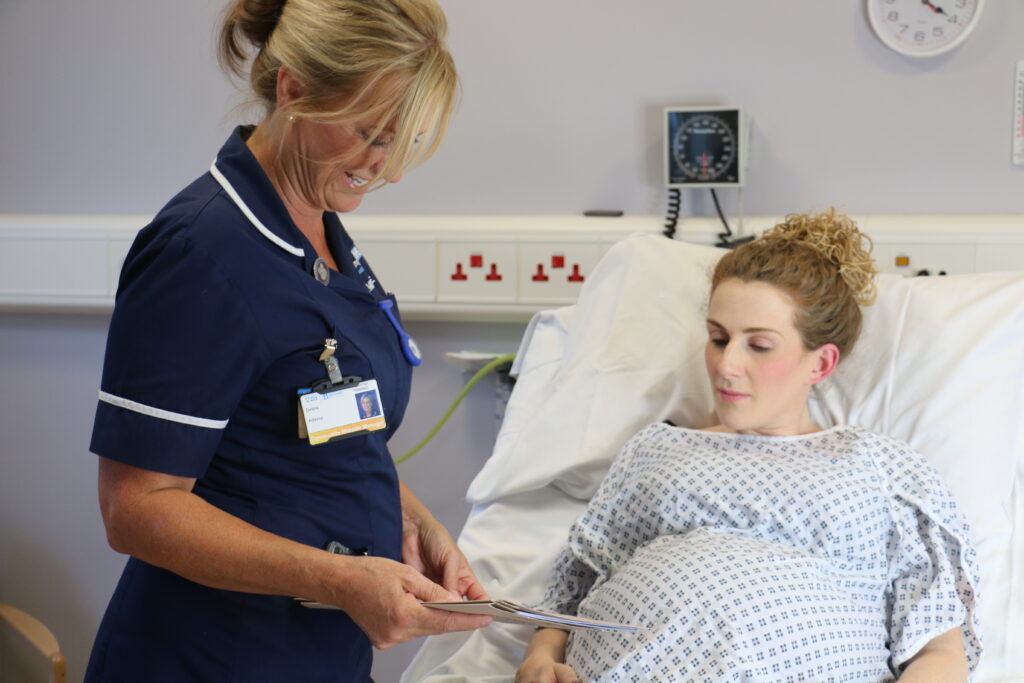
During labour, even a slight rise in temperature can quickly raise concerns among maternity staff. The immediate assumption often centres around the possibility of infection, and this can influence the course of your birth experience – potentially leading to interventions that may not have been necessary.
Yes, a raised temperature can be a sign of infection. That should never be dismissed. But it’s also true that a mild increase in body temperature can occur for entirely physiological reasons during labour.
One of the most common causes of a temporary temperature rise is postprandial thermogenesis – the natural increase in body temperature that occurs after eating. In labour, this is particularly relevant because labouring women are often encouraged to eat carbohydrate-rich snacks (like honey, fruit, toast, sweets, or energy bars) to keep up their stamina. These foods are quick to digest and provide the energy needed for the intensity of labour – but they also stimulate your metabolism and create a short-term rise in internal heat.
Then there’s the physical intensity of labour itself. Birthing a baby is one of the most demanding physical acts a human body can perform. Just like exercise can increase your core temperature, so can labour – especially during the active and transitional stages.
Hormonal shifts also play a role. Your body releases powerful hormones during labour, including oxytocin, adrenaline, and prostaglandins. These hormones influence your body in various ways – sometimes raising your heart rate, altering your blood pressure, and yes, affecting your body temperature too.
Even your emotional state can influence how your body responds. If you’re feeling anxious or overstimulated, that can cause a mild temperature rise. And don’t underestimate the impact of a hot birth room, extra blankets, or warm water if you’re using a pool or shower.
So what’s the takeaway?
A common-sense approach is vital. Instead of jumping to conclusions based on one reading, care providers should consider the full picture:
- Are there other signs of infection?
- How does the woman feel in herself?
- Is her pulse or breathing unusually elevated?
- What are her waters like – clear or discoloured?
- Has she recently eaten, moved around, or become emotionally heightened?
Sadly, many maternity protocols are risk-averse by design. One elevated temperature reading can automatically trigger the ‘infection/sepsis’ pathway – even when there’s no real evidence to justify it. This can result in unnecessary stress, interventions, and a departure from the physiological birth the woman had hoped for.
As always, informed choice is key. It’s perfectly reasonable to ask for your temperature to be rechecked in an hour, to request more context before paracetamol or antibiotics are suggested, or to question the need for sudden monitoring if everything else is reassuring.
Your body is wise. It’s working hard and doing exactly what it was designed to do. A slight temperature rise is not always a red flag – it might just be your body doing its job.
What to Do If You’re Told Your Temperature Is Too High in Labour
If a care provider tells you that your temperature is raised, it’s easy to feel alarmed – especially if your birth plan depends on staying at home, or in the midwifery-led unit, avoiding antibiotics, or keeping things physiological. But before jumping to conclusions, take a breath and ask some important questions:
Ask for context:
- What is my actual temperature reading?
- What range is considered normal?
- Is this a one-off reading or a consistent pattern?
- Could this be influenced by something I’ve eaten or drunk (postprandial thermogenesis)?
- Was the reading taken after a hot bath, shower, or under warm blankets?
Request a recheck:
- Politely ask for your temperature to be retaken in 1 hour.
- Ensure it’s taken in a neutral, calm environment (not immediately after movement, eating, or emotional stress).
Consider the full clinical picture:
- Are there any other signs of infection? (e.g. high pulse, feverish feeling, cloudy or smelly waters, unusual discharge)
- Do you feel unwell? Trust your instincts.
- Is your labour progressing normally?
Stay grounded in your birth vision:
- A single reading doesn’t mean you have to abandon your birth plan.
- Ask whether you can continue to labour as planned while monitoring your temperature.
- Remember: You are the decision-maker.
Involve your birth partner and/or doula:
- Ask them to advocate for you if you’re not in a position to ask questions yourself.
- They can request clarification or help facilitate a calm and respectful conversation.
When Might a Temperature Over 38°C Still Be Physiological?
In some cases, it is possible for a person’s temperature to rise slightly above 38°C and still be experiencing a physiological response like postprandial thermogenesis, especially when combined with:
- A warm environment (hot room, water, blankets)
- Physical exertion (strong labour contractions)
- Emotional stress (which increases adrenaline and metabolic rate)
- Hormonal surges (especially prostaglandins and oxytocin)
- Reduced hydration (common in labour and can amplify heat retention)
Research and experience suggest:
Postprandial thermogenesis alone typically raises body temperature modestly – often by 0.3–0.7°C, and usually doesn’t push someone over 38°C on its own. However, in combination with the above factors, it’s plausible for someone in active or transition labour to spike just over 38°C without infection.
Clinical caveat:
Once the temperature reaches or exceeds 38.0°C, clinicians are trained to treat it as a potential sign of infection, especially due to concerns around maternal or neonatal sepsis. It’s a clinical threshold, but not always a definitive sign of pathology. That’s why context is crucial – a one-off reading of 38.1°C in a warm room after eating and contracting intensely is very different from a rising, sustained fever with other red flags.
While 38.0°C is often used as a clinical threshold for concern, it’s important to understand that temperature is influenced by many factors – especially in labour. If you’ve been eating (postprandial thermogenesis), working hard physically, feeling overwhelmed, or in a hot environment, it’s entirely possible to tip just over that number without it indicating infection. What matters is the pattern and the presence of other symptoms, not just the number on the thermometer.
Final note
It’s not about ignoring risk – it’s about interpreting information through a lens of balance, physiology, and respect. One number doesn’t define your whole story. You deserve care that sees you, not just the chart.
Download a Handy Checklist
I’ve created a beautifully designed Reference Sheet for Labour and Birth, which includes all the key points from this article – plus the questions to ask if you’re told your temperature is too high in labour.
It’s perfect to print, share with your birth partner, or tuck into your birth folder so it’s there when you need it most.
👉 Click here to download your free Reference Sheet
Because sometimes, just having the right information in your hands makes all the difference. 💛
